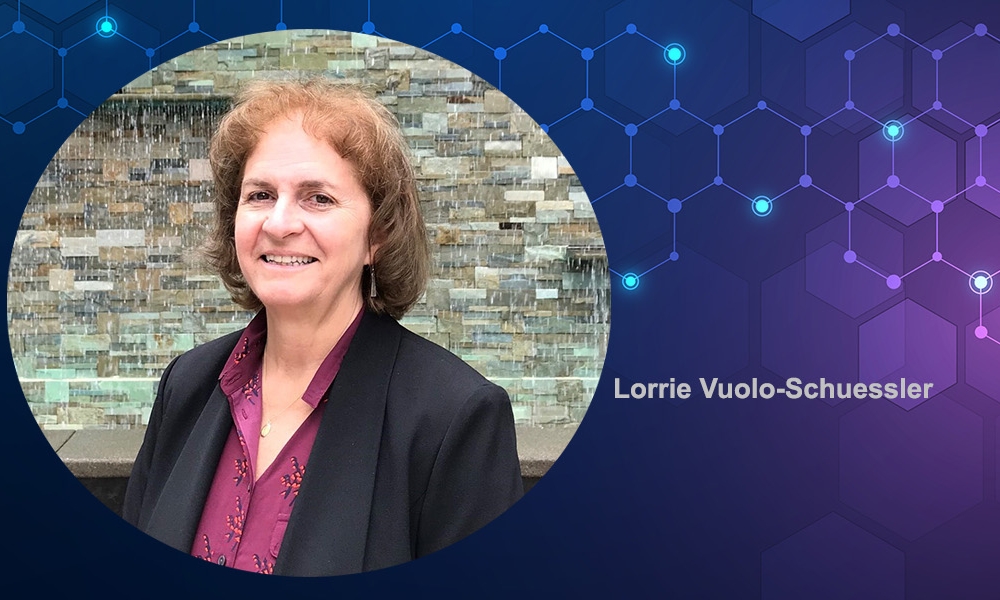2016 ISPE Biopharmceutical Manufacturing Conference Recap

Delivering On Our Promise To Patients San Francisco, California 4–8 December 2016
It is fitting that a city known for its disruptive innovation (think 1960s) would be the gathering place for ISPE’s first US conference on biopharmaceutical manufacturing. Certainly, biopharmaceuticals have disrupted an industry steeped in tradition. Yet that industry is changing and is using ground-breaking strategies to embrace a market that is expected to explode by the end of this decade. Consensus is that both small- and large-molecule players have room to grow in this space, albeit in different ways. And biopharmaceutical’s footprint is such that emerging markets may hold the key for traditional pharma’s ambitions. So, much change and newness all around.
It was no surprise then, to learn that 216 people from 14 countries descended upon the InterContinental Mark Hopkins hotel on 5 December 2016 for ISPE’s three-day conference on biopharmaceutical manufacturing. The conference welcomed 39 speakers, from 7 countries, to share insights, discoveries and concerns. Two education track sessions, Planning and Managing Capacity Challenges and Technology Solutions to Meet Capacity Challenges, were designed to provide participants with an understanding of the potential implications of accelerated growth in this sector.
The conference theme—Delivering on Our Promise to Patients—is one that ran through the presentations and conversations throughout the first day. Following are some highlights.
Day 1
John Bournas, ISPE CEO and President, welcomed delegates by reminding them that every day they help implement and put into place operations that put more medicines into the hands of people who need them on an everyday basis. “I feel energized every morning, knowing we at ISPE are contributing in some way to achieving that goal,” he said.
He underscored the international flavor of the conference, and remarked that the knowledge sharing of the sessions also would be international in scope.
Bournas went on to present an ISPE “state of the nation.” He began by announcing the impending release of a seminal project collaboration with Pew Charitable Trusts on drug shortages as they relate to sterile injectable products in the American market. “The results of ISPE’s collaboration with Pew contributes to the ongoing discussion on mitigation of shortages.” He also highlighted the ISPE Training Institute’s first year, stating that “we’ve had tremendous response from industry, with more than 1,000 people trained during the calendar year.”
Bournas then looked to 2017 and reminded the audience of the upcoming Aseptic Conference, as well as the Europe Annual Meeting in Barcelona. He also announced the first ISPE Conference on Quality Culture and Quality Metrics, 25–26 April 2017 in Bethesda, Maryland, citing the FDA’s recent revision of its Quality Metrics Guidance. “We need to maintain the momentum gained through the Wave 1 and 2 reports,” he said, pointing out that the FDA has put both reports on its website, along with the work The Brookings Institution has submitted on the topic.
He closed with a “rallying cry” for participants to attend the 2017 Biotechnology Conference in Dublin, Ireland, next September, and ISPE’s 2017 Annual Meeting in San Diego next November. “This is your biggest opportunity to network and promote your services.”
My friend Andy
Bournas then introduced the day’s keynote speaker, Andy Skibo, an ISPE member for 24 years. He called Skibo a visionary in the manufacturing space and said “I am pleased to no longer have to introduce you as my boss, but rather, as my friend.”
Skibo, former ISPE Board Chair and Chair of the Global Pharmaceutical Manufacturing Leadership Forum (GPMLF), which convenes heads of manufacturing and operations from leading pharmaceutical companies around the world, delivered a presentation on “Significant BioManufacturing Capacity Expansion Drivers, Scale, Consequences.” Delegates gained an understanding of the key changes in the pharmaceutical industry that are driving unprecedented change in the manufacturing environment, and what this means specifically to biologics. They also heard about the risks inherent in planning the USD $20 billion in investments and the capabilities needed to deliver them.
The GPLMF, he said, is made up of leaders in big pharma and big bio, and informs what is happening within supply chains. He began by telling the story of recent meetings where the conversation inevitably led to a “can we do this?” moment. “With close to $20 billion in large-scale biologics development, $13 billion in actual hard development, much of this expansion and development relies upon a narrow group of key suppliers for success.”
He added that current supply chains, focused upon mature products, will have to become segmented supply chains. “While some portion will still be managed for mature products, critically, a significant portion of the supply chain must be focused on agile and flexible response to new pipeline launches and uncertain demand.”
Running the pharmaceutical supply chains are experts from the automotive and apparel industry, among others. And while their skills are being put to good use within the pharmaceutical industry, it isn’t enough to “catch the wave.” Organizations, Skibo said, must shift from managing a mature product line to one that is less so, as the industry shifts to specialty care, with all the complexities and investment demands that entails.
While the answer to “Can we do this?” is “Yes,” Skibo added that proper planning, with focus on the required workforce and delivery methods is imperative for success to occur. And he closed by reminding the audience that “our patients are our drivers.”
From data to academia
The keynote was followed by a general session: “New Paradigms for Manufacturing Capacity,” led by Jennifer Lauria Clark.
Mrs. Clark introduced Eric Langer, President and Managing Partner, BioPlan Associates, who presented on “Biomanufacturing Global Capacity Trends: New Technologies, Biosimilars, and Innovation,” and then Ruben G. Carbonell, PhD, Director, Biomanufacturing Training and Education Center and the Kenan Institute for Engineering, Frank Hawkins Kenan Distinguished Professor of Chemical Engineering, Technology and Science, North Carolina State University, who delivered “Educating the Workforce for the Future for Biomanufacturing.”
Langer presented a high-level overview of the 2014–2016 results of BioPlan Associates’ annual survey of 222 organizations. He revealed that while there was no standout in the category of most important biopharmaceutical trend, manufacturing production and efficiency is identified as the single most critical trend in bioprocessing, noted most frequently by bioprocessing decision-makers, over the past 3 years.
How and when these technologies will be fully commercialized in terms of hiring and staffing, how to find the right people at the right time for staffing bioprocessing facilities will continue to be a challenge.
Dr. Carbonell presented the results of the BioProcess International/Biomanufacturing Training and Educations Council survey on challenges and barriers in education and training. He began his presentation by addressing the increased pressures and opportunities biopharmaceuticals have created, and how a new paradigm is required for the future of biopharmaceutical manufacturing. He spoke of the new levels of expertise industry has identified as must-haves for new recruits: professional skills, such as management scheduling tools, teamwork, communications, leadership, team organization, financial principles, and big data approaches. These workers of the future are perceived as the most important asset of an organization, and training, an investment.
Day 2
Conference participants woke up to a bright and sunny day 2. Judging by the enthusiasm and energy that permeated the day’s events, the boost of vitamin D worked.
The day began with Phillip McDuff, Vice President, Global Engineering, at Biogen, stepping in for keynote speaker Hitto Kaufmann, PhD, Global Head of Pharmaceuticals, Development and Platform Innovation, Sanofi-Aventis Deutschland GmbH, who was unable to attend. McDuff’s talk, “Supplying Exponential Demand,” focused on Biogen’s next-generation manufacturing strategy and how it has been applied to a new facility going up in Switzerland.
McDuff’s overriding message was that preparing for expansion is a delicate process involving strategy, data, and good timing. Biogen’s greatest challenge now, explained McDuff, is “dealing with an emerging drug in the pipeline with the potential to significantly increase demand on overall supply chain.”
Biogen’s commitment to patients makes it imperative the company expand. And considering its current pipeline, it has invested in a new facility, which will be built midway between Basel and Zurich, Switzerland.
The new biopharmaceutical manufacturing cell concept will utilize next-generation operations and integrated execution systems. “It’s not your typical six-pack,” said McDuff. “We modeled our specific processes to come up with the design.” Spanning 55,000 square meters, the new facility’s first phase of development will accommodate 10 metric tons, and be expandable to 35. The key to the concept, for Biogen, said McDuff “is the high titer cell line drives production.” With closed systems processing, reduced prep times, and high-performance operations that are highly automated and integrated, this new facility holds many of the features of “the facility of the future,” not the least of which is sustainability.
“This facility will use 83% fewer carbon emissions, use 79% less energy and 89% less water,” explains McDuff.
The project will take 51 months from start to finish, and is expected to be completed in January 2017.
Can continuous biopharmaceutical manufacturing live up to the hype?
That is the question. And the team presenting during the Continuous Processing session offered a resounding “Yes, but,” as an answer. Andre Walker, CPIP, Principal, Andre Walker Consulting, led this session that debated whether continuous processing could transform the economics of the highly regulated pharmaceutical industry as it did industries from steel to petroleum; and, in particular, whether the unique nature of biopharmaceutical products represent an insurmountable challenge.
John Bonham-Carter, Director, Repligen Corporation, and Jørgen Magnus, PhD, Manager R&D, Bayer, offered alternatives to current operating paradigms that will help companies achieve continuous biopharmaceutical processing. Bonham-Carter argued that perfusion cell culture methods have matured and are now a viable, even preferred, alternative to fed batch technology, while Dr. Magnus presented his successes with novel downstream methods that have been incorporated into a working prototype.
Making medicines available to those who need them
During an afternoon session on New Therapies and Their Manufacturing Challenges, three academics presented inspiring talks on the ongoing efforts in their laboratories to develop innovative technologies for bringing needed medicines to the patients who need them.
This was a rock-star session. Remember your university professor who kept you on the edge of your seat for the duration of class, and left you wanting more? That’s what this trio delivered: Board Director Antonio Moreira, PhD, Vice Provost, University of Maryland Baltimore County (UMBC); David Wood, PhD, Associate Professor, Chemical and Biomolecular Engineering, Wood Lab for Applied Engineering, The Ohio State University; and Jay Keasling, PhD, Professor of Chemical Engineering and Bioengineering, Synthetic Biology Institute, University of California, Berkeley.
Dr. Moreira talked about a paradigm-shifting technology being developed to make a small number of doses of therapeutic biologics right at the site where the patients will be administered such medicines. The technology will produce these medicines in 6–12 hours from start to finished dose, instead of the weeks- or months-long processes that are currently the norm. Implemented in briefcase-size factories, the technology can potentially be used in battlefield situations, hospitals, or clinics in a distributed manufacturing system. UMBC, The Ohio State University, Thermo Scientific, and Latham Biopharm are collaborating on this project.
Dr. Wood described a potentially universal technology for purification of proteins in a single- step process resulting in purities above 95%. The technology uses molecules known as inteins, which are attached to both the protein of interest and to an affinity tag. During chromatography processing, these intein molecules self-cleave through a simple process step such as a change in temperature or pH. The result is a native protein product that does not contain any of the affinity tag or the intein residues attached to it.
Keasling described his team’s work on engineering microorganisms, such as yeast, to produce needed pharmaceutical products. He gave the examples of artemisinin, used for malaria treatment, and taxol, used for cancer applications. These pharmaceuticals, currently sourced from plant materials, can thus be manufactured through technologies that assure a reliable and consistent supply of these compounds to the patients who need them. He highlighted his hope for the establishment of a network of biological foundries where technologies like these can be more efficiently developed to make new therapies for human disease available through a faster path.
Day 3
The last day of the conference focused on regulatory perspectives on the lifecycle management and manufacturing of biotech drugs, including biosimilars, and was hosted by Joseph Famulare, Vice President, Global Compliance and External Collaboration, Pharma Technical Quality, Genentech, a member of the Roche Group, and Past ISPE Chair.
“Biotech therapies have increasingly comprised a greater portion of pipelines and approvals for both new molecular entities by global health authorities,” said Famulare, “with approvals of biosimilars coming along.” He highlighted the importance of these programs and their effect on all markets, including those in emerging economies. As the biotech industry matures—at great speed—with new technologies and players regularly entering the space, the need to adapt to new realities and switch gears is incumbent upon all.
To introduce the morning’s speakers, Famulare articulated what he qualified as “the most common question”—“How did you handle the regulatory component when you retrofitted that plant?”—and suggested the regulatory and industry speakers would provide answers and insight. The speakers were: David Doleski, Deputy Director (Acting) Office of Process and Facilities, FDA/CDER/OPQ/OPF; Joslyn Brunelle, PhD, Product Quality Team Leader (Lead Biologist), FDA/CDER/OBP/DBRRIV; Jennifer Cheung, Director, Head of GMP Compliance Audit, Americas and Asia Pacific, Global Quality Compliance and External Collaboration (PTQG), Genentech, a member of the Roche Group; Jonathan Harris, Director, Regulatory Medi BioVentures, MedImmune/AstraZeneca, discussed licensing of biosimilars; and Roger Nosal, PhD, Vice President, CGMC, Pfizer Inc. Presentations were followed by a Q&A session.
Conference Co-Chair Britt Petty closed the conference by acknowledging the assistance of his Co-Chair Andy Skibo and the program committee’s work over the previous eight months, and thanking all ISPE staff members who participated in the planning and operations of the conference. He recalled a conversation with John Bournas 18 months ago about how to carve out a unique space for biologics manufacturing within ISPE. He said their goal was to create platforms for conversations about learning, trends and challenges in biologics manufacturing. “Thanks to John’s strategic leadership and vision, we established an ISPE biologics strategic steering committee and have held two successful conferences, one in Europe and one in the United States.”
He concluded with a bold statement that the audience reacted to with much acclaim. Alluding to the products in development for Alzheimer’s disease, other forms of dementia, and various types of cancer, he said “Delivering the pipeline is an opportunity to alleviate human suffering on a scope and scale that hasn’t been seen before.”


